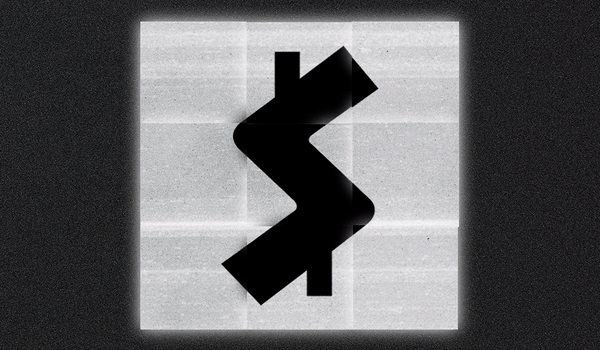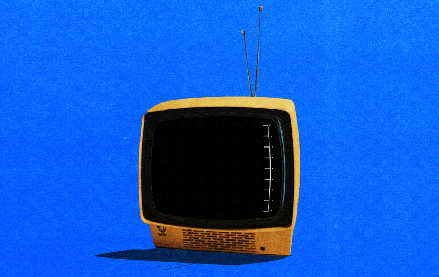Future of TV Briefing: CTV ad buyers say ‘the math isn’t mathing’ with sell-side shadiness, ad tech fees

This Future of TV Briefing covers the latest in streaming and TV for Digiday+ members and is distributed over email every Wednesday at 10 a.m. ET. More from the series →
This week’s Future of TV Briefing recaps what brand and agency executives had to say behind closed doors at last week’s CTV Advertising Strategies event in New York City.
- ‘A lot of games being played’
- MLB’s rights talks, Starz eyes A+E and more
‘A lot of games being played’
Sure, in an ideal world for brands and agencies, advertisers would pay bottom dollar for CTV ad impressions and wouldn’t pay any ad tech fees. Obviously. But that’s not realistic.
The reality is, though, that ad buyers feel like CTV inventory is being marked up to too high of a degree — by streaming services and by ad tech intermediaries — and they’re backing up those claims.
During Digiday’s CTV Advertising Strategies event in New York City last week, brand and agency executives discussed CTV CPMs and ad tech fees during a behind-closed-doors town hall session, in which participants were granted anonymity in exchange for candor. Here’s a selection of what they had to say.
The games streaming ad sellers play
“Streaming video in general, whether you buy direct or programmatic, CPMs are higher than a linear TV buy. And clients often favor cheaper CPMs. So we’ve been trying to provide complementary metrics, such as brand lift, search lift and all the halo effect that CTV has across other channels. But that is a general challenge: streaming video is expensive.”
“One of the challenges is that pricing for CTV inventory has been fairly decoupled from supply and demand dynamics for a long time. Most publishers are focused on maintaining a certain price level in the market versus monetize a higher percentage [of available inventory]. That leads to a lot of, frankly, annoying conversations with [CTV ad sellers] of, ‘Well you’re not selling 100% of it, so why can’t you drop your price by X?’”
“It happened back in linear TV. If you bought a late-night mix, you negotiate a mix that’s 50-50 [between] two shows, and they will spend all year trying to give you the cheaper show. It’s the same thing [in CTV], just on a bigger scale. They’re going to figure out where they can make a margin. And if they can make a margin, they’re going to keep doing it until they get caught.”
“With Hulu, we’ve had back-to-back quarters now where we’re doing [programmatic guaranteed] deals with guaranteed delivery. And before the end of the quarter, we’re way under where we should be from a pacing standpoint. And Disney’s just saying, ‘Oh it’s the end of the quarter, you know, high competition.’ It’s kind of like airlines overbooking seats.”
“Do you just lift all your frequency [caps] so you can just deliver in full? Because then, from an agency standpoint, if you deliver under [the client’s target], there’s consequences. But when the providers are setting up guaranteed deals, setting their impressions, but they’re not hitting them — the math isn’t mathing.”
Ad tech fees
“It’s not always communicated properly to all clients. So they don’t understand where all the fees are coming from, whether it’s working media media and essentially what’s happening on the supply side too. Whether it’s an SSP taking a take rate or even the agency applying a markup or principle that’s not disclosed or it may be hidden in the details.”
“[Clients] just may not be used to seeing every layer of the ad tech fee. Data supply, programmatic ad tech fee — it just gets compounded. It could be upwards of 15%, 20%, 30%, 40% of your media when you use some DSPs.”
“We just had a client who asked to only be on premium content. So they wanted Hulu, Disney, Max, Amazon. So we did individual RFPs to all of them to understand what the CPMs were. They were ranging in the $20s with all the targeting we wanted. And then we did DSPs, and they were between $45 and $55. So the challenge was: Do we have to do individual buys [where] we have inconsistencies from tracking to reporting to buying and all that? Or do we pay the 50% [markup to buy through the DSPs], which we have to then justify to our client? And the 40% to 50% [markup] was on the low side. We saw some giving us CPMs that were close to $70.”
[Digiday: “Who were the ones for $70?”]
“LocalFactor. Basis.”
“If I were to say to a client, ‘We’re going to put all our money in Amazon because I’m going to pay the $22 [CPM], is it worth getting more viewers through the different platforms and paying that increased CPM, or is it worth having your dollars concentrated on one platform and being able to buy it, manage it, with that consistency of the lower CPM?’ — that’s tough.”
DSP dynamics
Given the need to use Google’s DSP to buy YouTube and Amazon’s DSP to buy Prime Video and The Trade Desk to access other CTV inventory, “there’s three different DSP fees until such a point that there’s one DSP that has access to everything, and it’s one fee that’s baked in. Which may not happen. That’s going to be the challenge that the agencies face in terms of going back to clients and trying to minimize fees so much that it starts to get into the agency fees to help offset that. That’s just going to be a challenge because there’s no one DSP that has access to everything right now.”
“There are certain DSPs like The Trade Desk that do offer ways to quantify, if you’re using programmatic to drive incremental reach and manage frequency holistically, they’re able to report back to you how many unique households you drove in that or how many households were passed by in the bidding process because they would have been duplicative. That’s just one example, but I think that’s really key because the fees are not hidden. The fees are not necessarily a bad thing to getting you access to technology and capabilities that improve the effectiveness — so long as you can prove that and it does pay out.”
“Those fees can be up for some discussion. But a lot of the times we have to trim back everything except for identity graph and the actual DSP fee. And at that point, are we really taking advantage of most of what programmatic can offer, or are we just running a pseudo direct buy through programmatic pipes just for the sake of being innovative and being digital?”
Inventory opacity issues
“The way that the inventory itself is defined also causes some of the pricing confusion in the fact of what are we actually buying? We got a joint business plan from The Trade Desk. A client was running with them, [inventory] was labeled as CTV — except when we dove in, we found that a lot of the delivery was on mobile [web] video. And those were like $15-$20 CPMs. So then we ran it as pure CTV; of course, they’re seeing upwards of $30, even $40 [CPMs]. And they’re like, ‘why?’”
“If I’m buying a March Madness package, I’m looking to guarantee placement in-game, but understanding from a scale perspective, there also has to have some ancillary inventory so that we actually get and deliver on impressions. The crux there is after the fact looking at reporting and seeing a lot of the inventory is running on CBS content, but it doesn’t clearly state or identify in-game inventory, which causes a lot of questions. And when you’re buying sports, you’re paying a premium. Little things like that would be a bit more helpful from certain platforms.”
[Digiday: “Who are the ones that aren’t providing that?”]
“This particular partner was Genius Sports. And really just among other things, the inventory itself that was shown in the reporting was a little inconsistent with what we agreed upon.”
“Most agencies are strapped for staff. They don’t have the time to dive in and look at all the transparency and all the numbers in that level of granularity that they should all the time or at least consistently. People will spot-check it, but they don’t have the time to look every day.”
“That’s the fundamental challenge. There’s many more places to hide things and less time to find what stays hidden.”
“The brands are putting in dollars because they want outcomes. Meanwhile, there are a lot of games being played to [create] high margins and extract fees.”
What we’ve heard
“We believe that 50%, if not more, of the [2025] upfront dollars — not all year — have gone to streaming.”
— IPG Mediabrands’ Dani Benowitz on stage during Digiday’s CTV Advertising Strategies event last week
Numbers to know
40%: Percentage share of video ads that are expected to be created using generative AI by 2026.
$10.99: New monthly subscription price for Peacock’s ad-supported tier, a $3 jump.
$11.08 billion: How much revenue Netflix generated in the second quarter of 2025.
$3.6 million: How much money NBCUniversal will pay to settle a class-action lawsuit over how hard it makes canceling a subscription to Peacock.
What we’ve covered
YouTube’s AI slop crackdown has creators concerned, marketers cheering:
- YouTube has started to crack down on what it describes as “inauthentic” content.
- The move could affect creators who repackage others’ clips for their videos.
Read more about YouTube here.
Overheard at Digiday’s CTV Ad Strategies event:
- Streaming may have accounted for 50% of advertisers’ and agencies’ upfront spending commitments this year.
- Brand and agency executives also discussed ad pricing, ad tech fees and a need for more data.
Read more about Digiday’s CTV Ad Strategies event here.
Instagram offers a new guide to advertisers to convince them to try out its creator marketplace:
- Instagram is ramping up efforts to drive interest in its Creator Marketplace with a brand new, 26-page how-to document for marketers.
- The new version of Instagram’s Creator Marketplace aims to make it easier for brands to find and contact creators for campaigns.
Read more about Instagram here.
Google’s YouTube overtures gain traction among marketers refocusing on brand investments:
- YouTube has been particularly pushing its new Peak Points ad product and YouTube Shorts in this year’s upfront market.
- Some ad agencies said their clients’ spending on YouTube ads has increased by about 50% this year.
Read more about YouTube here.
What we’re reading
The baseball league is weighing bids from Apple, NBC and ESPN for the Sunday Night Baseball rights that ESPN had previously owned but opted not to renew earlier this year, according to CNBC.
The premium cable TV network is considering a big for the cable TV network conglomerate that Disney and Heart are looking to divest, according to The Ankler.
Somehow it took until now for Fox Sports to do a deal with Barstool Sports to feature Barstool owner Dave Portnoy on Fox Sports programs and to air a Barstool show on FS1, according to The Hollywood Reporter.
PubMatic’s AI sports ad exchange:
Traditional sports advertisers are a little wary of getting too technical with their sports ad buying, but then there are the advertisers scooping up sports through pay-TV providers inventory shares who may be interested in PubMatic auctioning off this inventory programmatically with AI somehow involved because of course, according to Adweek.
Want to discuss this with our editors and members? Join here, or log in if you're already a member.
More in Future of TV

‘A year of loose ends’: Digiday editors share top takeaways from 2025
This year was filled with major developments – from Netflix’s planned WBD deal to Omnicom’s acquisition of IPG to Google’s ultimately cookie reversal – and Digiday editors Sara Jerde and Seb Joseph help to recap the year that was (and wasn’t).

Future of TV Briefing: How the future of TV shaped up in 2025
This week’s Future of TV Briefing looks back at the top topics and trends that overtook the TV, streaming and digital video industries in 2025.

Programmatic agency execs speak out on CTV transparency
At the recent Digiday Programmatic Marketing Summit, agency executives spoke out — on stage and in behind-closed-door town hall sessions — on how they see transparency in CTV.








